
At the Museo Jumex in Mexico City, Gabriel Orozco: Politécnico Nacional is the first museum exhibition in Mexico in nearly 20 years for one of the country’s leading contemporary artists. The show surveys Orozco’s work from the 1990s to the present, spanning four floors and the museum’s public plaza. With more than 300 works—sculptures, installations, photographs, drawings, paintings, and games—the exhibition explores Orozco’s practice of creating an interplay between objects and concepts.
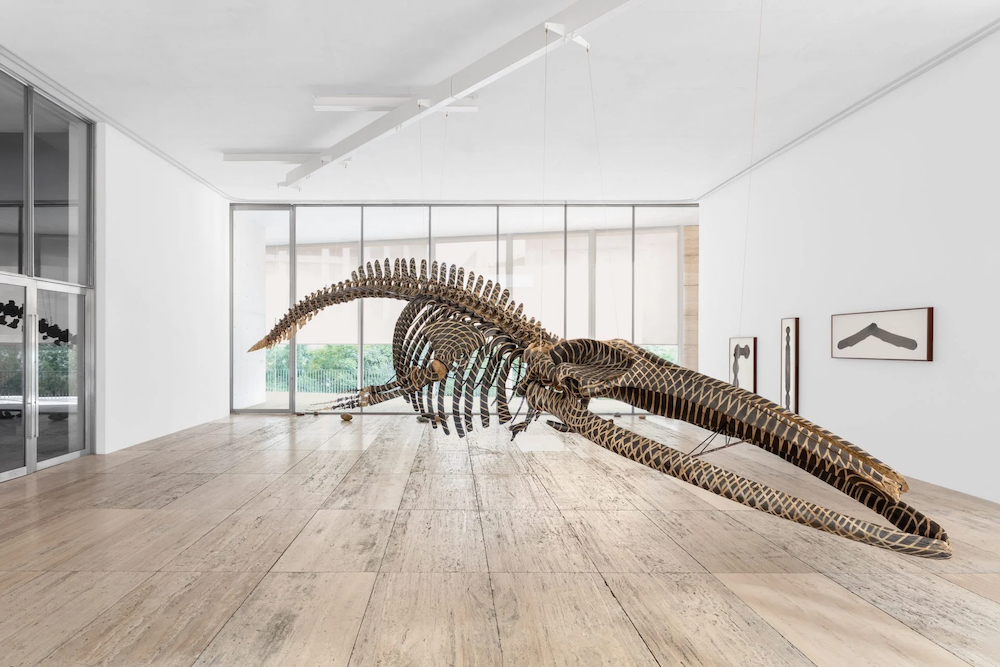
The show is organized into “constellations” of material and thematic relationships, rather than by chronology or category, referencing the elements of earth, air, and water. The lower level contains the “compost” of ideas, voices, and media. The first floor contains aquatic works, including Dark Wave, cast from a 15-metre long whale skeleton. Works on the second floor are earthly and vegetal, and the third floor is filled with floating, airy, and streamlined objects.
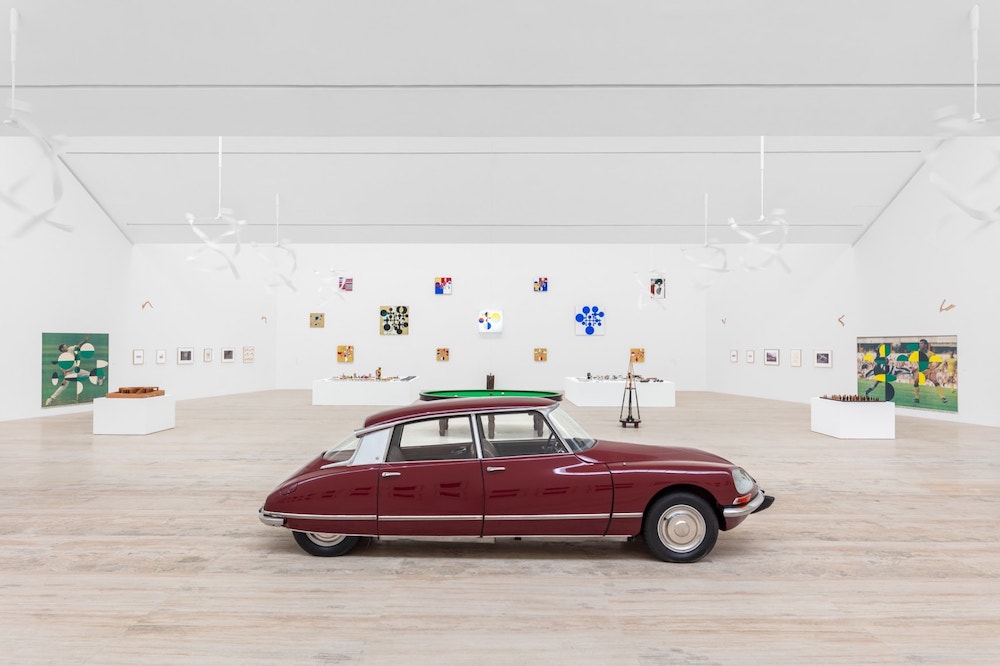
Among Orozco’s most iconic works is La DS Cornaline, a 2013 replica of a work first made in 1993 from a 1960s Citroën DS. Orozco cut the car lengthwise into thirds, removed the center section, and reassembled the two remaining parts into a strange, narrow form. Its elongated shape suggests speed, but the engine has been removed, transforming something functional into a bemusing work of art.
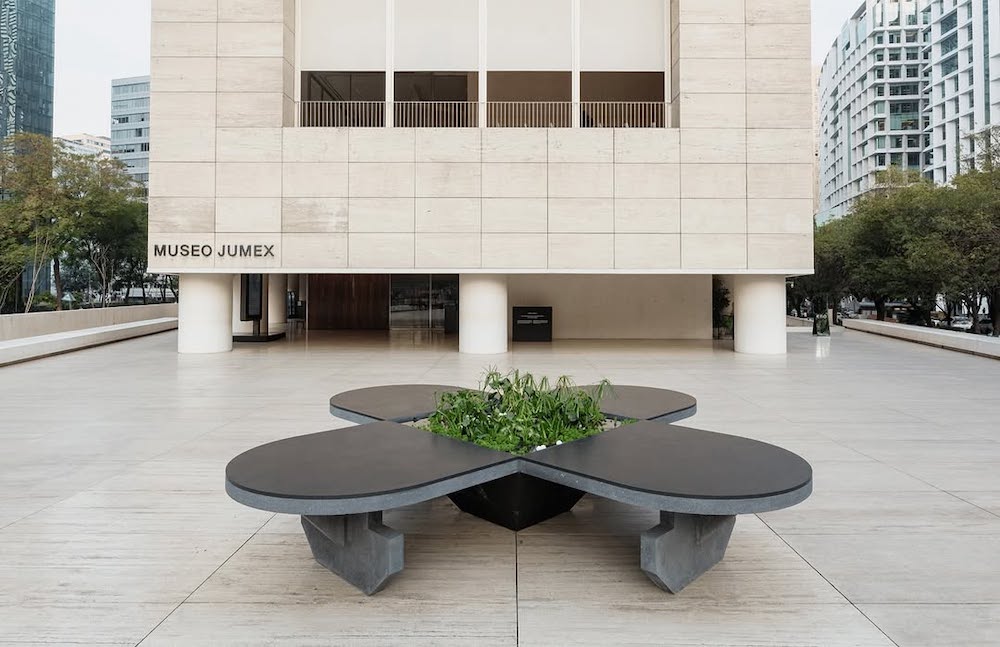
On the museum’s public plaza, a new version of Ping Pond Table (the first was made in 2000) features two ping-pong tables carved from stone, sliced and arranged around an artificial pond. It invites visitors to play and exemplifies Orozco’s interests in art in the public sphere, as well as games and their rules.
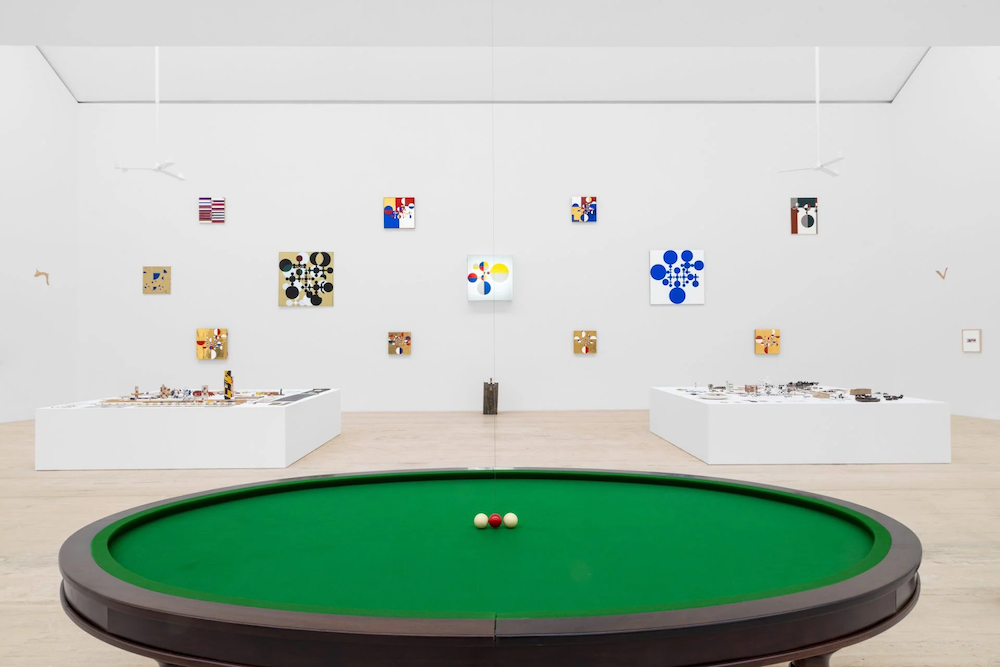
Themes on games are frequent in Orozco’s work. In Horses Running Endlessly, a chessboard’s squares, colors, and knights are multiplied by four, reimagining the game field into a geometrical landscape. In his Samurai Tree paintings, red, blue and gold-leaf circles overlap and expand on patterns of how a knight moves across a chessboard.
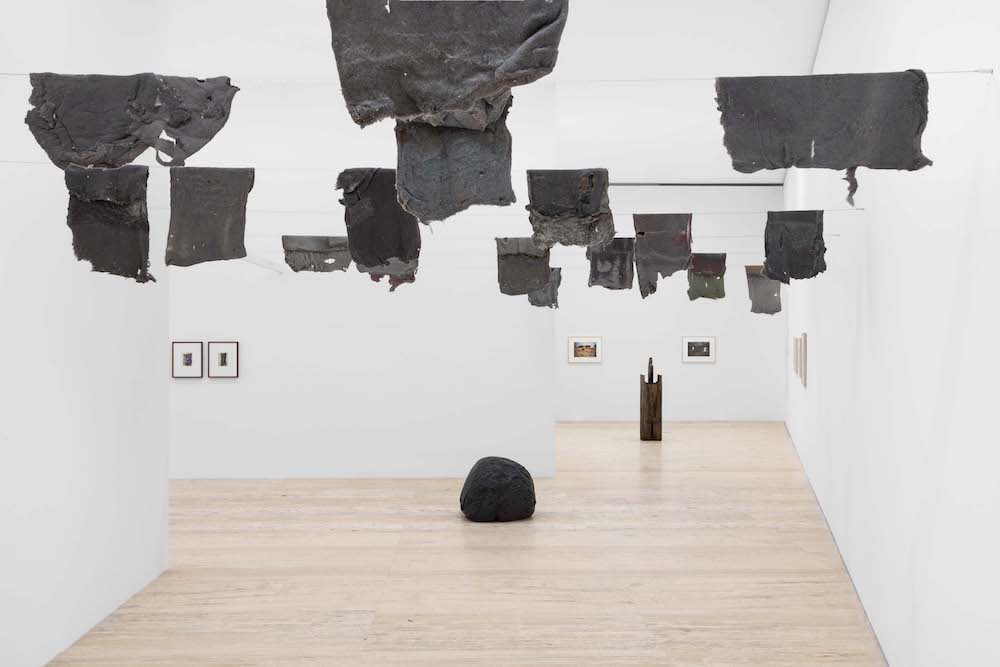
The exhibition’s title refers to the nearby Instituto Politécnico Nacional, which focuses on technical and engineering programs but has no art curriculum. Orozco’s works find conceptual interconnections between these fields, challenging the boundaries between art and everyday life.
Gabriel Orozco: Politécnico Nacional is on view at Museo Jumex through August 3, 2025.